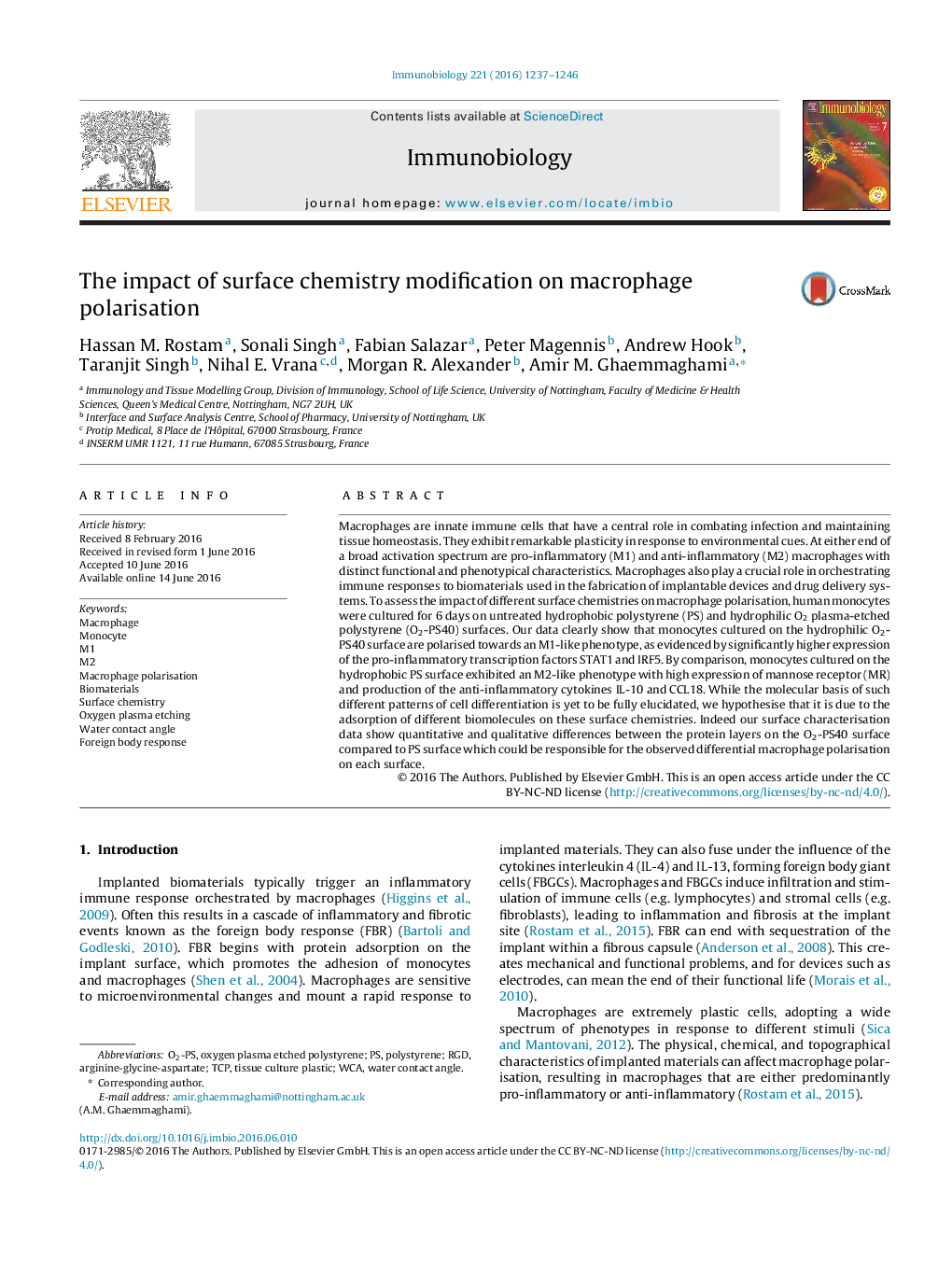| کد مقاله | کد نشریه | سال انتشار | مقاله انگلیسی | نسخه تمام متن |
|---|---|---|---|---|
| 5532693 | 1402065 | 2016 | 10 صفحه PDF | دانلود رایگان |
Macrophages are innate immune cells that have a central role in combating infection and maintaining tissue homeostasis. They exhibit remarkable plasticity in response to environmental cues. At either end of a broad activation spectrum are pro-inflammatory (M1) and anti-inflammatory (M2) macrophages with distinct functional and phenotypical characteristics. Macrophages also play a crucial role in orchestrating immune responses to biomaterials used in the fabrication of implantable devices and drug delivery systems. To assess the impact of different surface chemistries on macrophage polarisation, human monocytes were cultured for 6 days on untreated hydrophobic polystyrene (PS) and hydrophilic O2 plasma-etched polystyrene (O2-PS40) surfaces. Our data clearly show that monocytes cultured on the hydrophilic O2-PS40 surface are polarised towards an M1-like phenotype, as evidenced by significantly higher expression of the pro-inflammatory transcription factors STAT1 and IRF5. By comparison, monocytes cultured on the hydrophobic PS surface exhibited an M2-like phenotype with high expression of mannose receptor (MR) and production of the anti-inflammatory cytokines IL-10 and CCL18. While the molecular basis of such different patterns of cell differentiation is yet to be fully elucidated, we hypothesise that it is due to the adsorption of different biomolecules on these surface chemistries. Indeed our surface characterisation data show quantitative and qualitative differences between the protein layers on the O2-PS40 surface compared to PS surface which could be responsible for the observed differential macrophage polarisation on each surface.
Journal: Immunobiology - Volume 221, Issue 11, November 2016, Pages 1237-1246
